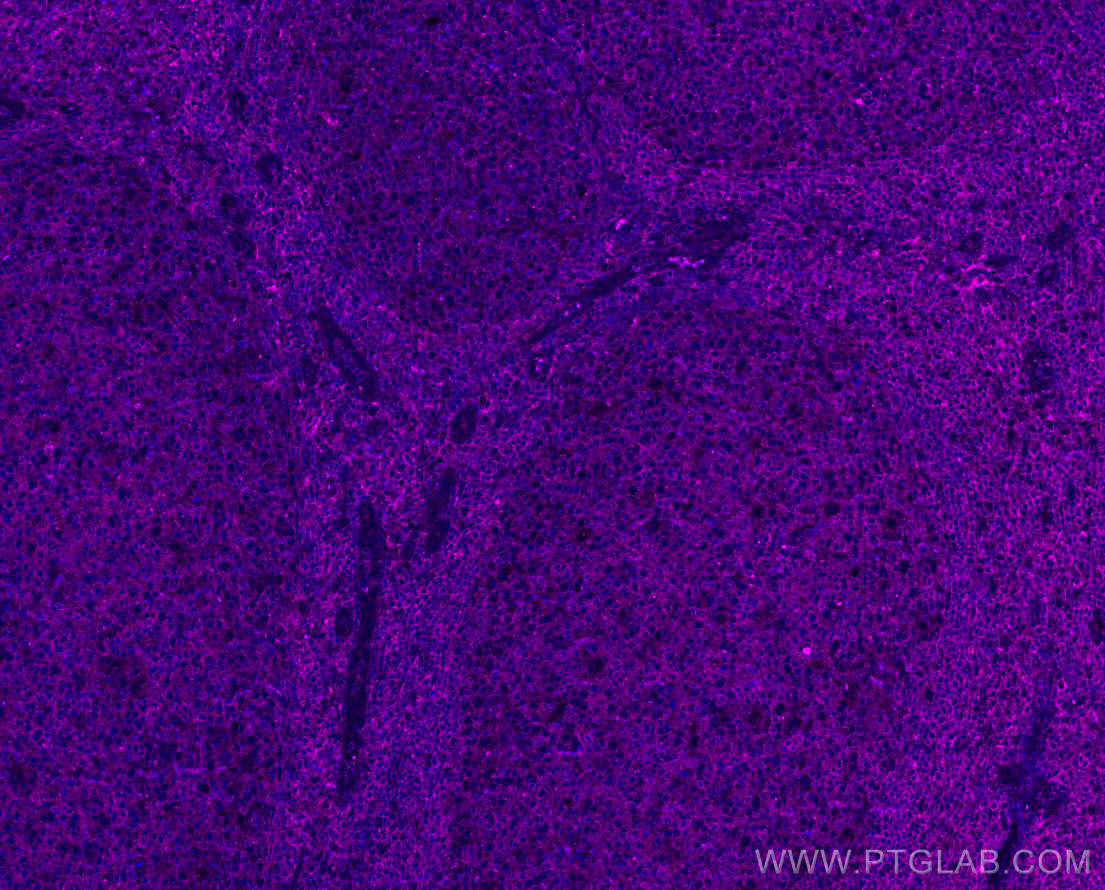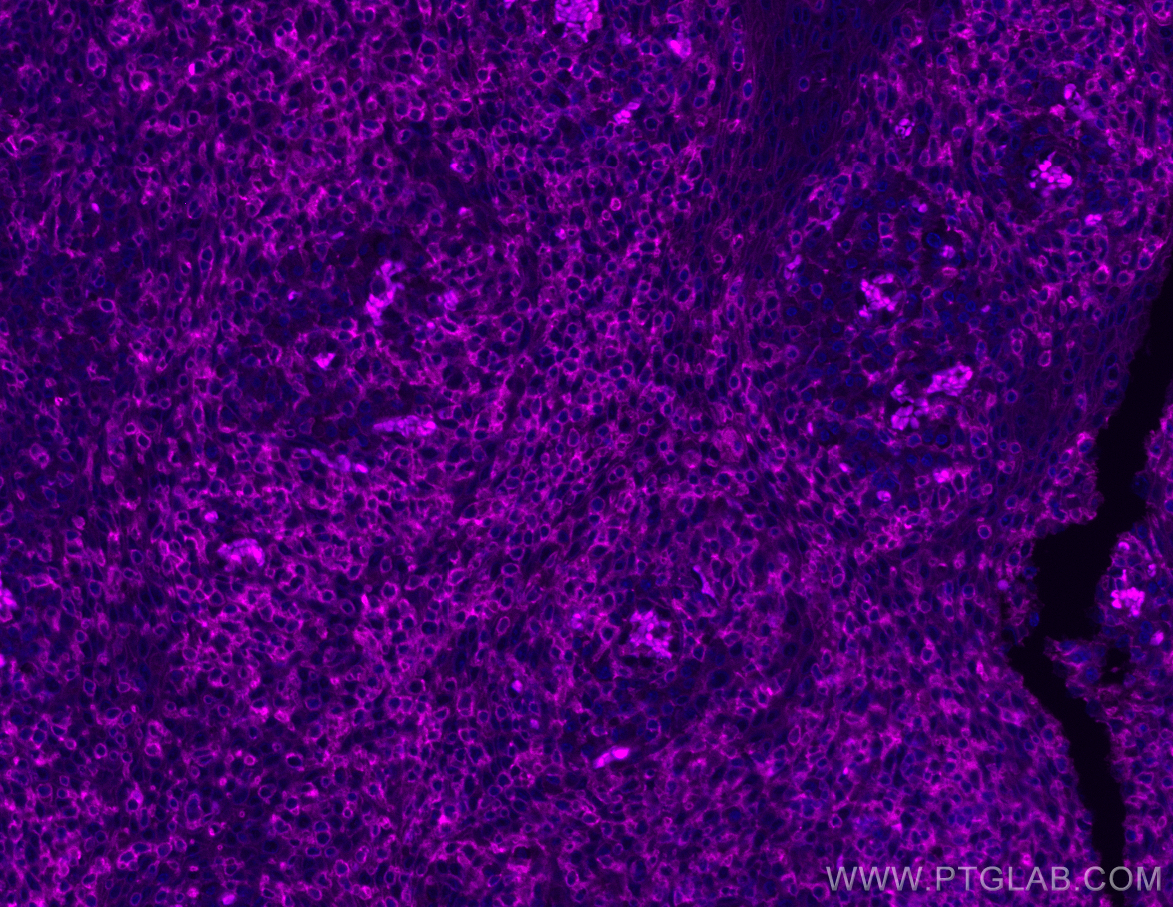验证数据展示
经过测试的应用
| Positive IF-P detected in | human tonsillitis tissue |
推荐稀释比
| 应用 | 推荐稀释比 |
|---|---|
| Immunofluorescence (IF)-P | IF-P : 1:50-1:500 |
| It is recommended that this reagent should be titrated in each testing system to obtain optimal results. | |
| Sample-dependent, Check data in validation data gallery. | |
产品信息
APC-84591 targets CXCR6 in IF-P applications and shows reactivity with human samples.
| 经测试应用 | IF-P Application Description |
| 经测试反应性 | human |
| 免疫原 | Peptide 种属同源性预测 |
| 宿主/亚型 | Rabbit / IgG |
| 抗体类别 | Recombinant |
| 产品类型 | Antibody |
| 全称 | chemokine (C-X-C motif) receptor 6 |
| 别名 | CXCR 6, CXC R6, CDw186, CD186, BONZO |
| 计算分子量 | 39 kDa |
| 观测分子量 | 45 kDa |
| GenBank蛋白编号 | BC033584 |
| 基因名称 | CXCR6 |
| Gene ID (NCBI) | 10663 |
| 偶联类型 | APC Fluorescent Dye |
| 最大激发/发射波长 | 650 nm / 660 nm |
| 形式 | Liquid |
| 纯化方式 | Protein A purification |
| UNIPROT ID | O00574 |
| 储存缓冲液 | PBS with 0.09% sodium azide and 0.5% BSA , pH 7.3 |
| 储存条件 | Store at 2-8°C. Avoid exposure to light. Stable for one year after shipment. |
背景介绍
CXCR6, or C-X-C chemokine receptor 6, is a G protein-coupled receptor with seven transmembrane domains that belong to the CXC chemokine receptor family. This family also includes CXCR1, CXCR2, CXCR3, CXCR4, CXCR5, and CXCR7. CXCR6 is expressed in several T lymphocyte subsets and bone marrow stromal cells. The encoded protein and its exclusive ligand, chemokine ligand 16 (CCL16), are part of a signaling pathway that regulates T lymphocyte migration to various peripheral tissues such as the liver, spleen red pulp, intestine, lungs, and skin. CXCR6 plays a crucial role in immunosurveillance through its interaction with epithelial cells and certain subpopulations of intratumor dendritic cells (DC), particularly DC3, which express CXCL16 at the membrane.
实验方案
| Product Specific Protocols | |
|---|---|
| IF protocol for APC CXCR6 antibody APC-84591 | Download protocol |
| Standard Protocols | |
|---|---|
| Click here to view our Standard Protocols |

